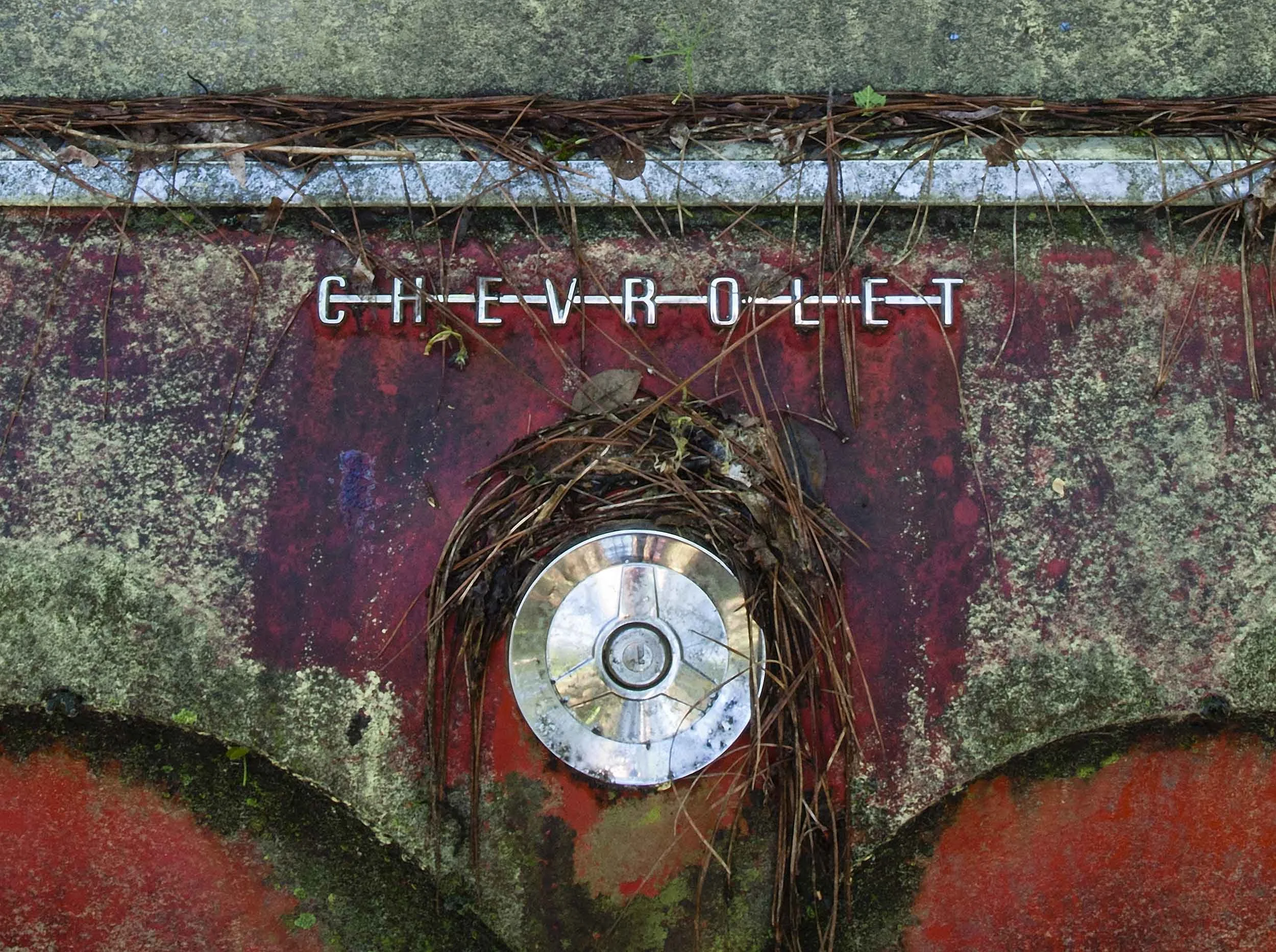Nature vs. Cars
Crashing a junkyard party and turning it into art.
Detail of an image from Ken McElrath’s Nature vs. Cars series. © 2012 by Ken McElrath. All rights reserved.
This series began back in 2012. A photographer friend, Tom Kilpatrick, invited me to join him at an old car “graveyard” in Georgia. At first I wasn’t that interested. I’ve seen so many pictures of old cars that photographing junk cars felt like a sentimental journey I didn’t want to make. But then something happened as I began to pay attention to what was going on—moving beyond “looking” to actually “seeing” with a disciplined awareness.
This graveyard was different than most. Cars had been parked in the woods and simply left there. The woods kept on doing their thing, growing and propagating new life. The cars, on the other hand, stopped doing what they were designed to do—travel. Instead, the cars started doing what nobody had put any serious thought into when they were first designed and built—decaying and being returned to nature. Regardless of that lack of human forethought, or perhaps in response to it, nature was playing games with the vehicles, transforming them in the process. These inorganic machines designed for combustion and “progress” were being overtaken and torn apart by earth, sun, water, insects, plants, and animals. It was a rout. It was a party. And I decided to crash it.
Over time, the visual aspects of my work have become increasingly similar to formalism. While this series certainly displays that bent, I don’t share the atheistic, nihilistic, or gnostic tendencies of the modern formalist movement. This series unveiled a narrative—a story that had been banging around in my heart but had not been released though my head and hands until after I made these images and began showing them. The images unleashed an inner laughter as I focused on the ultimate triumph of nature over machines. Mold, mildew, and moss of all types, shapes, and colors were unmaking these cars. Rust, rot and tree roots were slowly ripping them apart to accelerate their demise, while insects, invertebrates, and invading animals were “tricking them out” in celebration of their ultimate disappearance. This unmaking process was strangely beautiful to me—even joyful.
We all strive to purchase autos for all kinds of seemingly important reasons at the time (transportation, ego, style, speed). But do we really need a car (or two or three) to achieve any of those things? Pause with that question. Hmm.
Can we allow ourselves to sit and be uncomfortable with that question for more a minute? Probably not, as American culture now revolves around the automobile, for good and ill. Yet the vast majority of humans in our world live without ever owning one. In fact, with a global median per-capita household income of only $2,920 per year, the vast majority of humans would not be able to afford even one car in their lifetime. As the Pennsylvania State trooper told me during my driver’s license exam, driving a car is not a right—it’s a privilege. So is owning a car. But in the US, where the average median household income is 23 times higher than most of the world, we are privileged, and we often take automobiles for granted. We also take for granted that when we’re done with them, somebody else will figure out what to do with them—all 57 million of them we produce and sell each year. Can the natural world actually handle digesting 57 million autos per year when we decide we’re done with them? Again, there’s a thought to ponder for a minute.
As depressing at that little digression sounds, in the case of this particular car graveyard, thankfully, I can say that nature is winning. Slowly. Very slowly. But even if it take hundreds of years for these cars to fully disappear, I find it worth celebrating that in this one place, in this one case, nature will win to some degree. And in the interim, I can enjoy the process and turn that process into art.


